Rowing
By Carmen Tomfohrde
I began rowing four years ago during a spat of frustration with my bike. Previously, a knee injury led me into cycling as a long-term alternative to knee surgery. One night a cyclist behind me accidentally swiped my rear wheel with his front tire, and we sprawled across the pavement. Though I eventually got back on my bike and continued cycling until moving to HKU for my PhD, I needed a little hiatus from my bike.
Certain leg press activities maintain the strength of the knee, and in both cycling and rowing the main driver of power is a leg press action. I’d watched rowers on the Shing Mun River, and I wanted to give rowing a try.
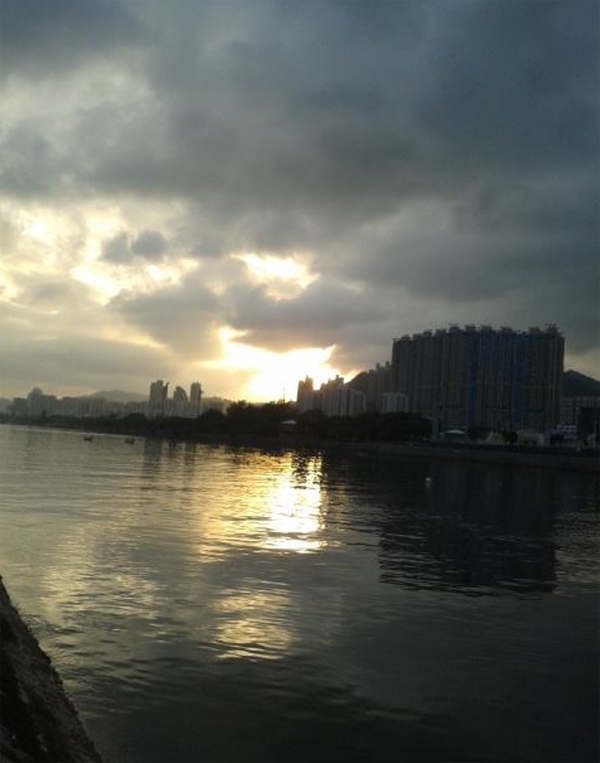
The Shing Mun River, seen from the Shek Mun Rowing Center

The Shing Mun River at night, seen from the Sha Tin Rowing Center
Enter School of English MPhil alumna Sze Tin Tin, whom I met during my evening MAES degree at HKU. A veteran of HKU Rowing, she directed me toward the rowing classes offered through the Hong Kong, China Rowing Association, and I was soon hooked. The instructor of my final course was New Star Rowing Club coach Franco Cheng; after joining New Star, I encouraged Tin Tin to join us. She in turn connected me to HKU Rowing, where I participate to the extent that I am able around my PhD work.
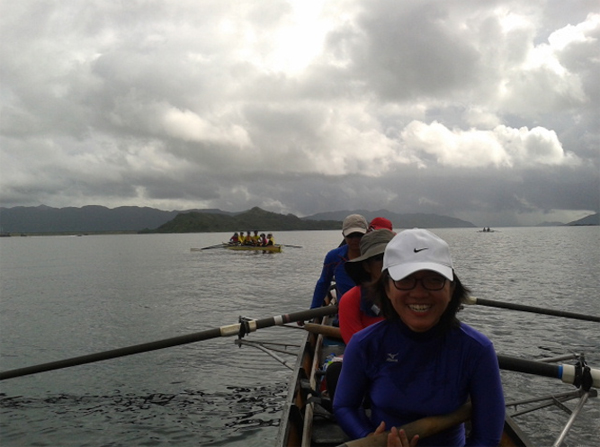
Sze Tin Tin leading a coastal rowing four in a rowing sea trip
My nine-year-old niece, in a conversation about my rowing, informed me, “Aunt Carmen, it’s not about winning medals.” She’s right. What is it about, then?
It’s about balance. Rowers must cooperate and deliver correct technique to keep the boat balanced and moving efficiently, but—speaking metaphorically of balance—rowing is also a healthy way for me to disconnect from work and contribute to a community.
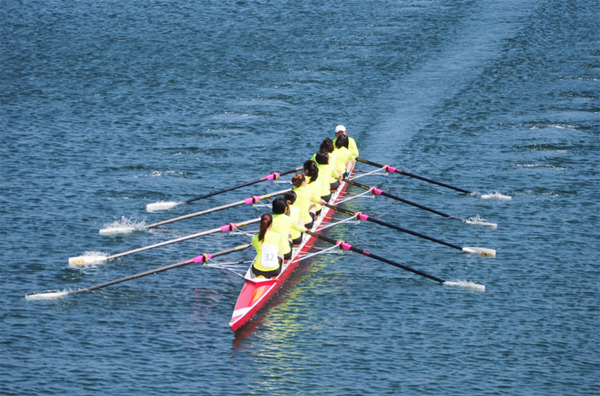
Tin Tin and I are both rowing stroke side (oars on the right of the image) in this eight
It’s about learning and personal growth. As a highly technical sport, rowing is as much an intellectual endeavor as it is a physical one, and it has pushed me into a new field of knowledge as well as new experiences.
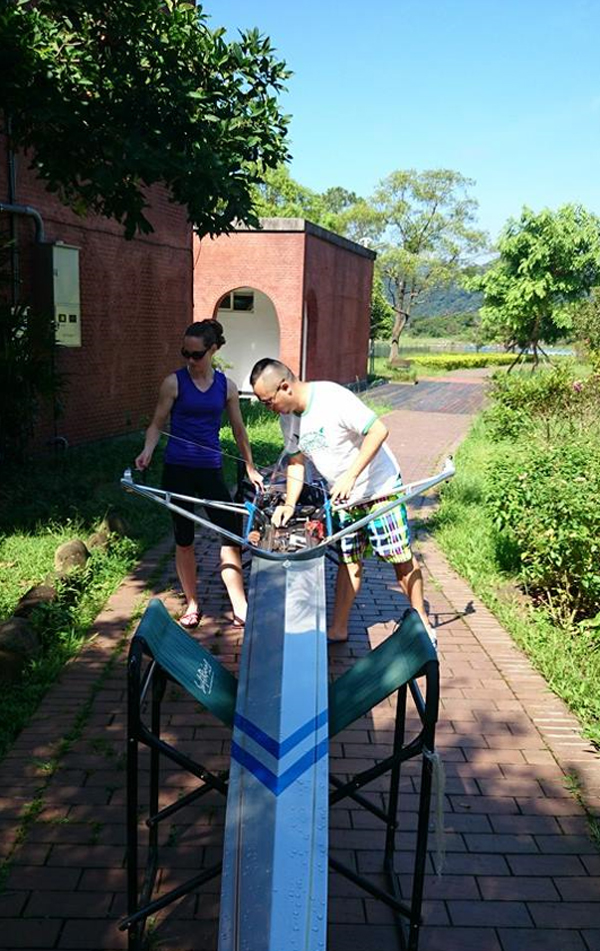
Getting a rigging physics lesson from HKU coach Sze Ho (Photo taken by Alan Mok)
It’s about finding my limits. That means sometimes finding I am capable of more than I thought, but also sometimes putting me in my place and reminding me that I’m not superhuman.
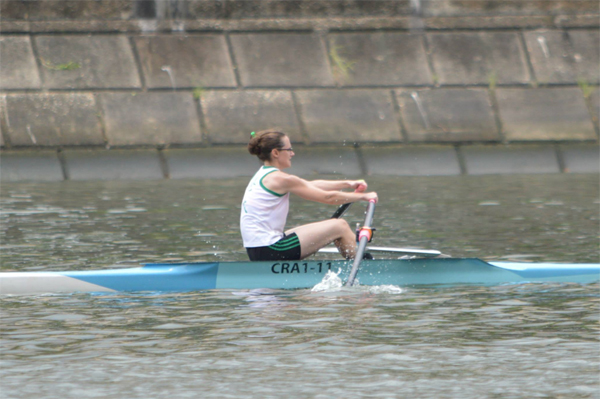
Single sculling to a rather unimpressive last-place finish in the 8-university championships (Photo taken by Sam Woo)
It’s about keeping things in perspective. After pushing myself through a difficult and painful workout, I can hardly feel ruffled by some trivial slight, which might otherwise make me irritated.
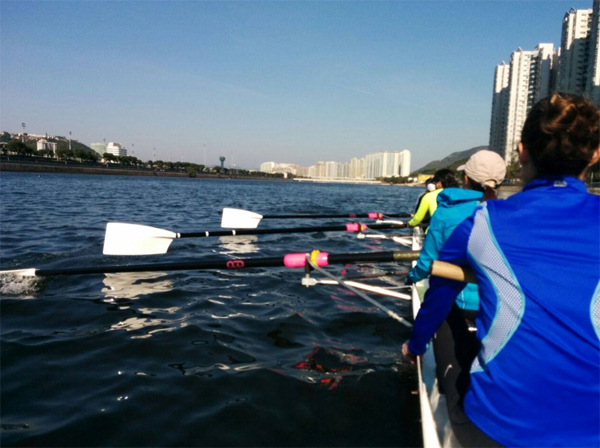
I’m in dark blue, resting my oar (Photo taken by Ivy Tam)
It’s about delivering my best for the team. Every stroke matters in a rowing race, and fellow rowers can feel sloppy technique. Literally and figuratively, we are all in it together.
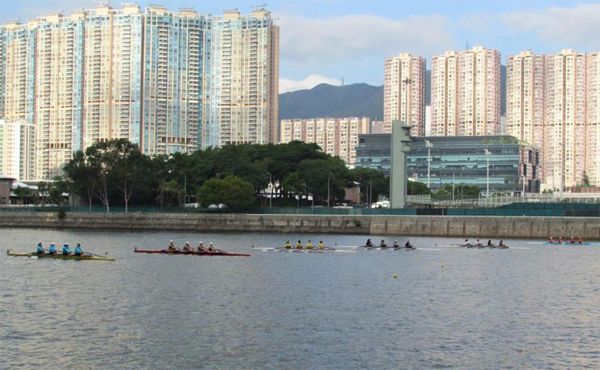
Sculling quads lining up for a 1000-meter race. My team is in yellow. (Photo taken by Stephen Lam)
It’s about “transferrable skills.” I am convinced rowers are well-suited for the workforce: they can produce under stress, focus and concentrate even in pain, and work when no one is paying them for it.
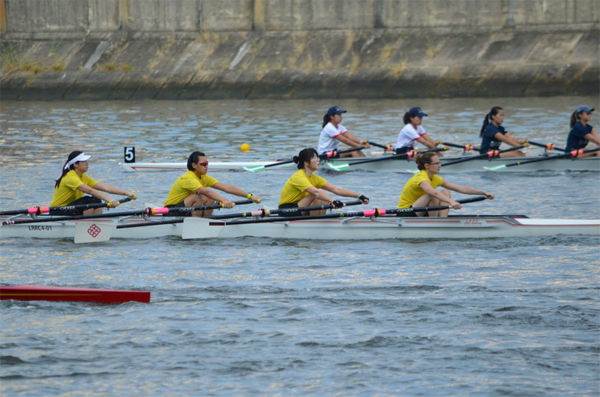
The same sculling quads at race pace (Photo taken by Sam Woo)
It’s about maintaining my limited Cantonese. My chronic errors have prompted coaches to repeat certain phrases so many times that language inability is no excuse for poor performance.
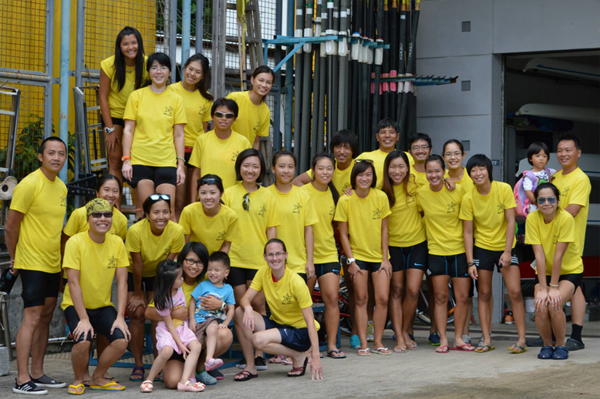
Some members of New Star Rowing Club (Photo taken by courtesy New Star)
It’s about exploring Hong Kong. Tell me, is Hong Kong not beautiful?

Coastal rowing boats on a sea trip

Our apologies, you must be logged in to post a comment.